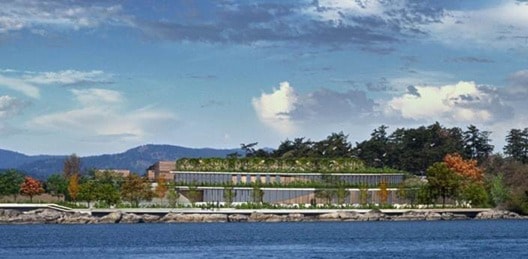Even though the final decision on where a wastewater treatment plant should be located lied in the hands of the Capital Regional District (CRD), Jonathan Wilkinson had been keeping a close eye on what a panel of experts would ultimately recommend.
And when the panel released its recommendation on Sept. 7, calling for a single 108 megalitre/day tertiary plant at McLoughlin Point at an estimated cost of $765 million, Wilkinson liked what he saw.
“Municipalities have a lot of flexibility in terms of what they do. The 2020 regulations require they meet a minimum set of thresholds. What is proposed is a little bit above the minimum requirement and we would be very supportive of that,” said Wilkinson, parliamentary secretary to the minister of environment and climate change, noting the sewage debate in Victoria has been raging longer than anywhere else in the country.
“These are very difficult decisions and they involve the expenditure of lots of money so it’s reasonable that municipalities have vigorous conversations to try to ensure they are arriving at an appropriate conclusion. The discussion has gone on for a long time and at a certain point you just need to make a decision and move on.”
The federal government is spending billions of dollars over the next several years in support of new national standards that are meant to crack down on raw sewage pumping into Canadian waterways. The new rules mandate secondary treatment of all sewage in municipalities across the country.
Victoria has been deemed a high-risk, therefore it must construct a facility by 2020.
Scientists, however, have long debated whether Greater Victoria truly needs to change its way of streamlining sewage into the ocean, arguing the outfalls pose no public health hazard and don’t seem to be having a negative impact on the marine life.
Some residents continue to question the need for a facility, but Wilkinson said jurisdictions across the country are facing the same requirements.
“We revisited the science and the federal government is comfortable that this is an appropriate step from an environmental perspective,” said Wilkinson, who spoke at a Chamber luncheon Tuesday afternoon.
“This has been a debate that’s been raging for a long time. At this stage we’d really like to see it move to a decision and ultimately move forward to the construction of a plant.”
In order to help the region move forward, the province waded into the matter in May, later establishing an independent panel of six experts to come up with a recommendation as to where a plant should be constructed.
After several hours of discussion on Wednesday, the CRD board approved the recommended business case for a single plant at McLoughlin Point.
The CRD now has until Sept. 30 to submit its plan to the federal government in order to receive more than $200 million in funding. If there is no proposal by the end of the month, Wilkinson said the funds will be allocated elsewhere since the CRD has already been granted two extensions.
